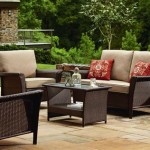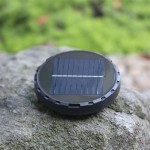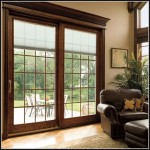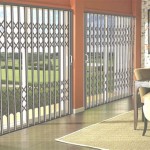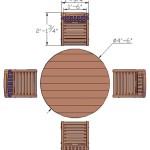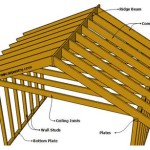Roof for Patio: Enhancing Outdoor Living Spaces
A patio roof is a structure designed to provide overhead protection for an outdoor patio area. It can offer shade from the sun, shelter from rain and snow, and create a more comfortable and usable outdoor living space. Selecting the appropriate roof for a patio involves considering various factors, including aesthetics, functionality, budget, and local building codes. This article will explore the diverse types of patio roofs available, their associated benefits, and crucial considerations during the planning and installation process.
Patio roofs are not merely functional additions; they can significantly enhance the aesthetic appeal of a home. They extend the living space beyond the interior walls, creating a seamless transition to the outdoors. A well-designed patio roof can become a focal point, adding value and character to the property. The selection of materials, style, and design elements should complement the existing architecture of the house, ensuring a cohesive and visually pleasing result.
Types of Patio Roofs
The market offers a wide array of patio roof options, each with unique characteristics and applications. Choosing the right type depends on individual needs and preferences. Some common types include:
1. Solid Patio Roofs: These roofs provide complete protection from the elements. They are typically constructed using materials such as wood, metal, or composite materials. Solid roofs offer excellent shade and can significantly reduce the amount of direct sunlight reaching the patio. This type of roof is ideal for patios that are used frequently, regardless of the weather. Solid roofs can be attached to the house or built as freestanding structures. They offer a sense of permanence and can be designed to match the existing roofline of the home.
2. Pergolas: Pergolas are open-roof structures characterized by their lattice or slatted design. While they provide some shade, they do not offer complete protection from rain. Pergolas are often used to create a visually appealing transition between the house and the garden. They can be constructed from wood, metal, or vinyl. Pergolas can be adorned with climbing plants, such as vines and roses, to create a more natural and inviting atmosphere. They are well-suited for homeowners who appreciate natural light and ventilation on their patio.
3. Awnings: Awnings are retractable or fixed coverings made from fabric or other flexible materials. They are typically attached to the house and can be extended or retracted as needed. Awnings offer a flexible solution for providing shade and protection from light rain. Retractable awnings allow homeowners to control the amount of sunlight reaching the patio. They are relatively easy to install and can be a cost-effective option for smaller patios. However, awnings may not be as durable as solid roofs or pergolas, especially in areas with strong winds or heavy snowfall.
4. Shade Sails: Shade sails are fabric canopies that are suspended between multiple anchor points. They come in various shapes and sizes and can be arranged to create custom shade patterns. Shade sails are a modern and visually striking option for providing shade to patios. They are relatively inexpensive and easy to install. However, they do not offer protection from rain and may require professional installation to ensure proper tension and stability.
5. Louvered Roofs: These roofs feature adjustable louvers that can be opened or closed to control the amount of sunlight and ventilation reaching the patio. Louvered roofs offer a high degree of flexibility and can be adjusted to suit changing weather conditions. They are typically constructed from aluminum or steel and are available in various colors and finishes. Louvered roofs are more expensive than other types of patio roofs, but they offer a premium level of comfort and control.
6. Glass or Polycarbonate Roofs: These options provide protection from rain while still allowing natural light to filter through. They are often used for sunrooms or enclosed patios. Glass roofs offer excellent clarity and durability, but they can be more expensive than polycarbonate roofs. Polycarbonate roofs are lighter and more impact-resistant than glass, making them a good choice for areas with extreme weather conditions. Both glass and polycarbonate roofs can create a bright and airy outdoor living space.
Benefits of Installing a Patio Roof
The installation of a patio roof presents several advantages, enhancing the functionality and enjoyment of outdoor spaces. These benefits include:
1. Protection from the Elements: A patio roof provides shelter from sun, rain, and snow, allowing homeowners to enjoy their outdoor spaces year-round. It protects patio furniture from fading and weathering, extending its lifespan. Shelter from the sun's harmful UV rays is another important benefit, making the patio a safer and more comfortable place to relax. In regions with frequent rainfall, a patio roof ensures access to outdoor space regardless of the weather.
2. Increased Home Value: A well-designed patio roof can increase the value of a home by enhancing its curb appeal and adding functional living space. Potential buyers often appreciate the added outdoor living area, which can be used for entertaining, dining, or simply relaxing. A patio roof can also make a home more attractive to buyers in areas with warm climates, where outdoor living is highly valued.
3. Enhanced Aesthetics: A patio roof can significantly enhance the aesthetic appeal of a home. It can be designed to complement the existing architecture and create a cohesive look. Patio roofs can be customized with various materials, colors, and finishes to match the homeowner's personal style. Landscaping and outdoor lighting can be added to further enhance the beauty of the patio area.
4. Energy Efficiency: A patio roof can help to reduce energy consumption by providing shade and reducing the amount of direct sunlight that enters the house. This can lower cooling costs during the summer months. The shade provided by a patio roof can also help to protect interior furnishings from fading and damage caused by sunlight.
5. Extended Outdoor Living Season: By providing protection from the elements, a patio roof allows homeowners to enjoy their outdoor spaces for a longer period of the year. In regions with mild winters, a patio roof can make it possible to use the patio year-round. Heaters and outdoor fireplaces can be added to further extend the outdoor living season.
Key Considerations Before Installation
Before embarking on the installation of a patio roof, it is paramount to address several crucial considerations. These include:
1. Building Codes and Permits: It is essential to check local building codes and obtain any necessary permits before installing a patio roof. Building codes vary depending on the location and may specify requirements for materials, dimensions, and structural integrity. Failure to comply with building codes can result in fines and delays. Obtaining the necessary permits ensures that the patio roof is installed safely and in accordance with local regulations. Consulting with a local building inspector or contractor is highly recommended.
2. Budget: The cost of installing a patio roof can vary widely depending on the type of roof, materials used, and labor costs. It is important to establish a budget before starting the project and to obtain multiple quotes from different contractors. Consider the long-term costs associated with maintenance and repairs when evaluating different options. Saving money on inferior materials or skipping crucial steps during installation can lead to costly problems down the road.
3. Design and Style: The design and style of the patio roof should complement the existing architecture of the house. Consider the roofline, color scheme, and overall aesthetic when selecting a patio roof. A well-designed patio roof will seamlessly integrate with the house and enhance its curb appeal. Consider the size and shape of the patio when determining the appropriate size and shape of the roof. A design professional can provide valuable assistance in creating a patio roof that meets both functional and aesthetic requirements.
4. Materials: The choice of materials will affect the appearance, durability, and cost of the patio roof. Wood, metal, and composite materials are all common choices. Wood offers a natural and aesthetically pleasing look but requires regular maintenance to prevent rot and insect damage. Metal is durable and low-maintenance but can be more expensive than wood. Composite materials offer a good balance of durability and affordability. Consider the climate and weather conditions when selecting materials. In areas with heavy rainfall or snowfall, it is important to choose materials that are resistant to water damage and corrosion.
5. Contractor Selection: Choosing a qualified and experienced contractor is crucial for ensuring a successful patio roof installation. Obtain multiple quotes from different contractors and check their references. Verify that the contractor is licensed and insured. Review the contractor's portfolio of previous work to assess their quality and style. A reputable contractor will provide a detailed contract that outlines the scope of work, materials to be used, and payment schedule. Communication is key to a successful project, so choose a contractor who is responsive and easy to work with.
6. Drainage: Proper drainage is essential for preventing water damage to the patio and surrounding areas. Ensure that the patio roof is designed to effectively channel water away from the house. Gutters and downspouts may be necessary to manage rainwater runoff. The slope of the patio should also be considered to ensure proper drainage. Standing water can create a breeding ground for mosquitoes and other pests.
7. Lighting and Electrical: Consider incorporating lighting and electrical outlets into the patio roof design. Lighting can enhance the ambiance of the patio and make it more usable at night. Electrical outlets can be used to power outdoor appliances, such as grills, heaters, and entertainment systems. Consult with an electrician to ensure that the electrical system is installed safely and in accordance with local codes. Recessed lighting, pendant lights, and string lights are all popular options for patio lighting.
8. Landscaping: Landscaping can enhance the beauty and functionality of the patio area. Consider adding plants, trees, and shrubs to create a more inviting and relaxing atmosphere. Climbing plants can be trained to grow on the patio roof, creating a natural and shaded canopy. Consider the maintenance requirements of different plants when making selections. Drought-tolerant plants are a good choice for areas with limited water resources. Planters and container gardens can be used to add color and texture to the patio area.
Planning and careful consideration of these factors are essential for creating a functional, aesthetically pleasing, and long-lasting patio roof that enhances the outdoor living experience.

Eoy All Weathers With A Plexiglas Patio Roof

Classico Outdoor Pergola

Integra 8 Ft X 18 White Aluminum Attached Solid Patio Cover With 4 Posts Maximum Roof Load 30 Lbs 1253006700818 The Home Depot

7 Diffe Roof Styles For Patios All Blog

How Much Does It Cost To Build A Roof Over My Deck Or Patio In Colorado

57 Stunning Patio Roof Ideas To Transform Your Outdoor Space Covered Design Pergola

Shed Roof Patio Covers Gallery Highest Quality Waterproof In Dallas Plano And Surrounding Tx

4 Patio Roof Decorations To Transform Your Outdoor Space

Diffe Roof Styles For Patios Vergola

38 Stylish Deck Roof Ideas For A Perfect Outdoor Retreat Patio Design Pergola Designs Backyard

